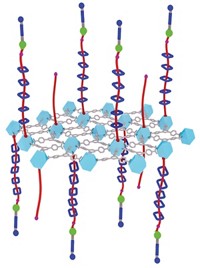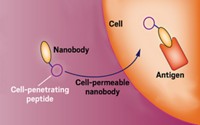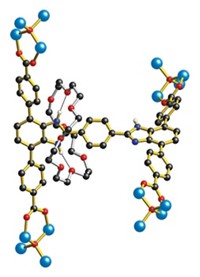Advertisement
Grab your lab coat. Let's get started
Welcome!
Welcome!
Create an account below to get 6 C&EN articles per month, receive newsletters and more - all free.
It seems this is your first time logging in online. Please enter the following information to continue.
As an ACS member you automatically get access to this site. All we need is few more details to create your reading experience.
Not you? Sign in with a different account.
Not you? Sign in with a different account.
ERROR 1
ERROR 1
ERROR 2
ERROR 2
ERROR 2
ERROR 2
ERROR 2
Password and Confirm password must match.
If you have an ACS member number, please enter it here so we can link this account to your membership. (optional)
ERROR 2
ACS values your privacy. By submitting your information, you are gaining access to C&EN and subscribing to our weekly newsletter. We use the information you provide to make your reading experience better, and we will never sell your data to third party members.
Drug Delivery
Boron clusters carry molecules into cells
Inorganic molecules use a novel mechanism to ferry cargo across membranes
by Bethany Halford
April 7, 2022
| A version of this story appeared in
Volume 100, Issue 12
Until recently, scientists thought that transporting certain molecules across biological membranes required an amphiphilic carrier: a material that contains both greasy and charged regions, like the lipid nanoparticles that escort the messenger RNA (mRNA) COVID-19 vaccines into cells. Upending that thinking, researchers have demonstrated that anionic boron clusters such as B12Br122- can transport a wide range of molecules across biological membranes.
Observing these boron clusters, which are anionic and inorganic, carry molecular cargo across cell membranes was surprising, says University of Santiago de Compostela’s Javier Montenegro, who led the research with Jacobs University Bremen’s Werner M. Nau. But, Montenegro says, “the most striking thing here is that they are transporting cargo by a completely different mechanism” than the one amphiphiles use.
Instead of mimicking the chemical features of biological barriers, as amphiphiles do, the boron clusters are superchaotropic, which means they create chaos in water’s hydrogen bonding network. The boron clusters break up the layer of water that surrounds charged molecules and that prevents them from entering cells. The clusters then escort those molecules across the membrane and release them, because the superchaotropic interaction is reversible (shown). The researchers used B12Br122- to deliver small bioactive molecules into cells (Nature 2022, DOI: 10.1038/s41586-022-04413-w).
Alexander M. Spokoyny, a University of California, Los Angeles, chemist who studies clusters, calls the work a fundamentally new route for delivering cargo into cells. “This is a very exciting and powerful strategy that will likely be adopted by many in the field,” he says in an email.





Join the conversation
Contact the reporter
Submit a Letter to the Editor for publication
Engage with us on Twitter